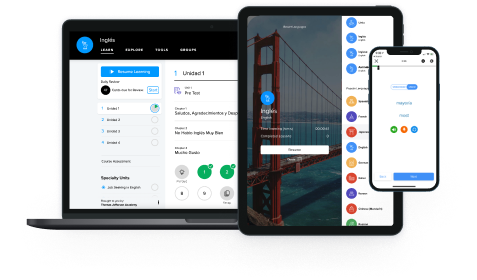Relative are words that are used to introduce a relative clause, standing in for the element that the and the relative clause have in common. In the examples below “that” is a relative pronoun:
No relative pronoun:repeated noun
The house had three bedrooms. She bought the house.
With a relative pronoun:nounrelative clause
The house that she bought had three bedrooms.
In German, the most common relative pronouns are der/die/das(that) and welcher/welche/welches(that (formal)). Each of these can come in several different forms, depending on what element they replace.
In this post, we’ll talk about how to form German relative clauses, how to pick the right relative pronoun, and take you through several different examples. Then, at the end of the post, we’ll talk about some less common relative pronouns and when to use them. Ready to have a look? Let’s investigate!
How to form relative clauses in German?
In German, we form relative clauses a lot like you do in English, but there are a couple differences which we’ve called out for you using exclamation marks.
Let’s say you have two ideas that involve a common element. For example:
repeated element (noun)
Ich liebe meinen Hund so sehr.
Manchmal frisst mein Hund Salat.
Sometimes my dog eats salad.
To combine those statements…
You use a relative pronoun to replace the common element with a relative pronoun:
common elementrelative pronoun
Manchmal frisst mein Hund Salat. → …manchmal frisst der Salat.
Sometimes my dog eats salad. → …sometimes who eats salad.
!! In German, you’ll need to choose the right form for the relative pronoun. Read more about how to do this below!
You change the word order so that the relative pronoun introduces the relative clause:
relative pronoun
…manchmal frisst der Salat → …der manchmal frisst Salat
…sometimes who eats salad → …who sometimes eats salad
You’ll also need to move the verb to the end of the clause, which is a common rule for subordinate clauses in German!
verbrelative pronoun
…der manchmal frisst Salat → …der manchmal Salat frisst
…who sometimes eats salad → lit. …who sometimes salad eats
You combine the two statements together, using the relative clause to describe the common element:
common elementrelative pronoun
Ich liebe mein Hund, der manchmal Salat frisst, so sehr.
I love my dog, who sometimes eats salad, so much.
⤷ TIPGerman relative clauses are always separated out by commas! We’ll discuss the placement of relative clauses in German a little more below.
There are two more little differences to keep in mind that we didn’t see in this sentence:
In German, usually stick with the relative pronoun, so you don’t say “The friend who I live with,” you say “The friend with whom I live.” We’ll cover an example of this below.
In English, we can sometimes drop the relative pronoun (e.g. “The friend you met…”) but in German we always keep it (e.g. “The friend who you met…”)
Now, let’s look a little more closely at the differences between German and English relative clauses.
How to determine the form of the relative pronoun in German?
In German, each of the two main relative pronouns, der/die/das and welcher/welche/welches. Der/die/das is used in everyday speech, while welcher/welche/welches is more formal. Both, though, come in several different forms.
How do you pick the form you will use in a given sentence? To do this you have to look at two factors:
The gender and of the “common element” the relative pronoun replaces.
The grammatical role the relative pronoun plays in the relative clause (in other words, its “case.”)
Let’s look at this using the relative clause we discussed above. Remember that we started with two statements that had a common element: “my dog.”
Ich liebe meinen Hund so sehr.
Manchmal frisst mein Hund Salat.
Sometimes my dog eats salad.
Let’s look for the two pieces of information we need:
In German, the common element, der Hund(dog), is masculine and singular, so this gives us the first piece of information we need.
Next, we look at the role that mein Hund plays in the sentence that will become the relative clause. In the second sentence above, mein Hund is the , and so it is in the nominative case.
Since we want the masculine singular nominative form, we can now look it up in the table below. As you can see, the masculine singular nominative form is: der!
Here is the table. Notice that the endings for the German relative pronouns are mostly the same as the endings of the definite article.
| derwelcher | diewelche | daswelches | diewelche |
Accusative (direct object) | denwelchen | diewelche | daswelches | diewelche |
| demwelchem | derwelcher | demwelchem | denenwelchen |
Genitive (genitive attribute) | dessen— | deren / derer*— | dessen— | deren— |
What’s the difference between deren and derer? Here's how to choose between the two genitive feminine forms.
Use deren when the relative pronoun stands before the noun representing what is being possessed:
Das ist sind die Leute, deren Name ich nicht kenne.
That’s the people whose names I don't know
→ We use the genitive because the people possess names.
Use derer when the role of the relative pronoun is a genitive required by the verb:
Das sind die Leute, derer wir gedenken.
That’s the people whom we commemorate.
→ We use the genitive because gedenken(to commemorate) requires the genitive case.
Luckily, the genitive pronouns dessen, deren, and derer are hardly ever used in spoken German, so you won’t need to consider this rule very often!
Where to put the relative clause in German?
In German, like in English, the relative clause usually directly follows the noun it modifies, and is surrounded by commas. It is very important for the relative clause to stay close to this noun. If it’s placed differently, the meaning can change.
modified nounrelative clause
Das ist der Mann, der Hugo heißt, mit seinem alten Hund.
This is the man who is named Hugo with his old dog.
Das ist der Mann mit seinem alten Hund, der Hugo heisst.
This is the man with his old dog who is named Hugo.
When the context is clear, though, the verb can often fall between the noun and the relative pronoun:
verbrelative clause
✅ Ich habe den Mann, der Hugo heißt, gesehen.
✅ Ich habe den Mann gesehen, der Hugo heißt.
I have seen the man who is named Hugo.
Making German relative clauses: Some more examples
Now that we’ve covered the basics of how to form German relative clauses, let’s look at some additional examples that will help you practice identifying which form of the relative pronoun you should use.
Example 1: Dative
Let’s start with these two statements:
common element
Diese Frau heißt Marie. Ich habe dieser Frau ein Buch gegeben.
This woman is called Mary. I gave a book to this woman.
The common element is: (die) Frau
Replace the common element in the second sentence. What form do we use?
(die) Frau, the common element, is feminine singular
In the second statement, the woman receives something = dative
Dative singular feminine = (die) Frau
Move the relative pronoun to the front and the verb to the end:
relative pronounconjugated verb
ich habe der ein Buch gegeben. → der ich ein Buch gegeben habe
Insert this new relative clause into the main clause:
modified nounrelative clause
Diese Frau, der ich ein Buch gegeben habe, heißt Marie.
This woman, (to) whom I gave a book, is called Mary.
Example 2: Genitive
Now let’s try it with these two statements:
common element
Steve ist ein Mitschüler von mir. Seine Mutter ist Krankenschwester.
Steve is one of my classmates. His mother is a nurse.
The common element is a bit more difficult to identify here, because they’re identified using different words, but Steve and seine are “common elements” because seine(his) refers to Steve.
Replace the common element in the second sentence. What form do we use?
Steve, the common element, is masculine singular
In the second statement, Steve is a possessor = genitive
Genitive singular masculine = dessen
Move the relative pronoun to the front (it is already there, so nothing to do) and the verb to the end:
relative pronounconjugated verb
dessen Mutter ist Krankenschwester → dessen Mutter Krankenschwester ist
Insert this new relative clause into the main clause:
modified nounrelative clause
Steve, dessen Mutter Krankenschwester ist, ist ein Mitschüler von mir.
Steve, whose mother is a nurse, is one of my classmates.
Example 3: Accusative
One last example! Let’s combine these two statements:
common element
Heute ist ein Brief angekommen. Ich hatte lange auf diesen Brief gewartet.
Today, a letter arrived. I had long been waiting for that letter.
The common element in this case is: (der) Brief
Replace the common element in the second sentence. What pronoun should we use?
Der Brief, the common element, is masculine singular
In the second statement, (der) Brief follows (warten) auf → accusative case
Accusative singular masculine = den
Move the relative pronoun and the preposition to the front and the verb to the end:
conjugated verbrelative pronounpreposition
ich hatte lange auf den gewartet → auf den ich lange gewartet hatte
Put the new relative clause right after the common element:
modified nounrelative clause
Heute ist ein Brief, auf den ich lange gewartet hatte, angekommen.
Today, a letter that I had long been waiting for arrived.
And that’s all you need to know about basic relative clauses in German. Let’s talk now about some less common relative pronouns and when you might want to use them!
When to use ‘wer,’ ‘was,’ and ‘wo,’ as relative pronouns?
In German, you can sometimes use the interrogative pronouns wer(who), was(what), and wo(where) like relative pronouns, but their use is restricted to certain contexts.
‘Wer’
Wer(who) can only be used like a relative pronoun in relative clauses that do not have an “antecedent noun.” This means that instead of modifying a noun, clauses introduced by wer represent a noun. Compare:
modified nounrelative clause
Der Mann, der zuletzt lacht, lacht am längsten.
The man who laughs last, laughs longer.
"wer" clause
Wer zuletzt lacht, lacht am längsten.
Whoever laughs last, laughs longer.
→ There is no modified noun. The clause wer zuletzt lacht acts directly as the subject of the sentence.
‘Was’
Was(what) is used in three cases:
Like wer, not referring to anything concretely:
Was du sagst, ist unmöglich.
What you’re saying is impossible.
With certain expressions, like alles, was(everything that), nichts, was(nothing that), das, was(that which), etc.
Du willst immer alles, was ich habe!
You always want everything (that) I have.
It can refer back to a whole clause, in which case it is translated as “which”:
modified clause
Er kommt immer zu spät, was ich einfach nicht verstehen kann.
He always comes late, which I simply can’t understand.
‘Wo’
Wo(where) refers to a place, which can be a town, a country, the supermarket, or simply the word Ort(place):
Ich kann mich an den Ort, wo ich geboren bin, kaum erinnern.
I can hardly remember the place where I was born.
‘Wo’-compounds
The combination wo(r)- + preposition (also known as “wo-compound”) can be used to replace a preposition + relative pronoun, when the relative pronoun refers to something nonspecific. Let’s take the example with the letter from above and replace the combination auf den with worauf.
Heute ist ein Brief, auf den ich lange gewartet hatte, angekommen.
Today, a letter that I had long been waiting for arrived.
Das, worauf ich lange gewartet hatte, ist endlich eingetroffen.
The thing that I had long been waiting for has finally happened.
lit. That which-for I had long been waiting, has finally happened.
Prepositions starting with a vowel require that wo- changes to wor-. Check out our table of wo-compounds to see all the possible forms!

